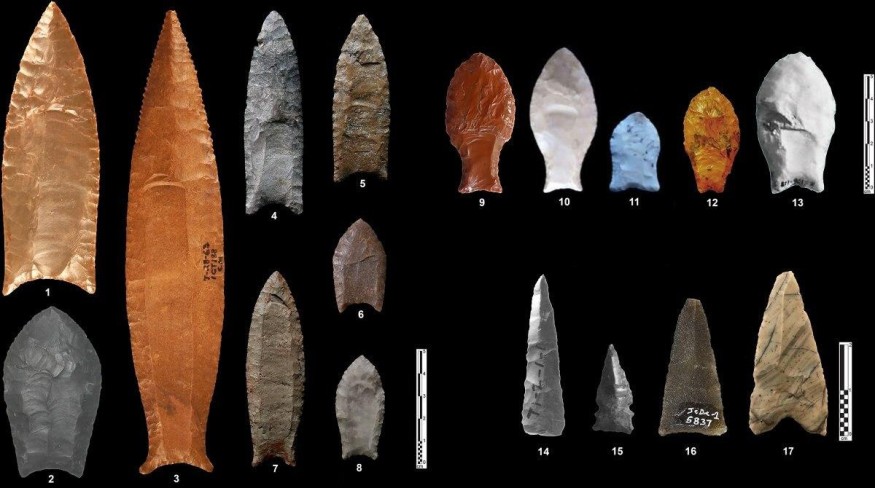
The fluted point is created by a flintknapper removing a flake from the base or tip of a spear point. It is generally done on both sides, but there are some cases wherein only one side of the point is fluted.
Fluted point stone tools are well-identified throughout the Americas, extending from the Arctic to Patagonia. But the recent discovery of 8,000-year-old fluted points in the southern part of the Arabian Peninsula, which included Yemen, Oman, and United Arab Emirates, indicates that the Early Holocene people in that region made tools using the fluting method.
Across other countries, such as in eastern and northern Africa, there has been no record of fluted point stone tools recorded. That means that the Arabian fluting method could be a local innovation of southern Arabian people originating from the central region of the peninsula's southern extremity.

Read Also: 12,000-Year-Old Ochre Mines Preserved in Underwater Mexican Caves
8,000-Year-Old Fluted Stone Tools in the Arabian Peninsula
A study published on Wednesday, August 5, in the journal PLOS One, revealed that archaeologists recently discovered some 8,000-year-old fluted point stones on the Arabian Peninsula. It is the same technology that was developed by Native Americans about 13,000 years ago.
At first, researchers suspected that the stone tools they discovered bear some familiarity about them. The scientists then took note of the flute-like grooves along the sides of the stone points.
They said that the tools examined for the study were found in Ad-Dahariz in Oman and Manayzah in Yemen.
Lead researcher Remy Crassard, the head for archaeology in the French Center for Archaeology and Social Sciences, said that they recognized the technique used in making those stone tools as probably the most famous prehistoric techniques that Native Americans once used.
It took the researchers some time to recognize the technique but more time in understanding how fluting could be present in the Arabian Peninsula.
Read Next: Norway is Excavating First-Ever Viking Ship in 115 Years But Needs to Save it First From Fungus
How Did Fluted Point Stone Tools Arrive in Arabia?
For almost a hundred years, archaeologists have discovered evidence of fluted point stone tools at Native American sites that dates back between 10,000 to 13,000 years old.
The fluted stone points found in the Americas are characterized by markings along with the spear points' bases and blades. But the ones found in Arabia have fluted markings closer to the tips of the stone points.
Both Native Americans and Arabians used hafting to fix blades and points to handles and arrows more securely, but they do so for different purposes.
In Arabia, it was used to create a flat zone in the back of the points and most likely to show 'bravado' or display their skills, Crassard said.
Moreover, the authors said that the result of cultural exchange could not have brought the technologies as the two stone fluted points are separated by too much time and space. They think that the latest discovery could be an example of cultural convergence.
Crassard noted that many examples of cultural divergence are recorded in diverse human periods in human history.
"For example, polished stone axes are known from the Western European Neolithic, the Mayan culture of Central America and the 19-20th century tribes of Indonesia," Crassard said.
According to archaeologists, they were all never connected in time and space, but the objects they made during their time were found to be very similar.












